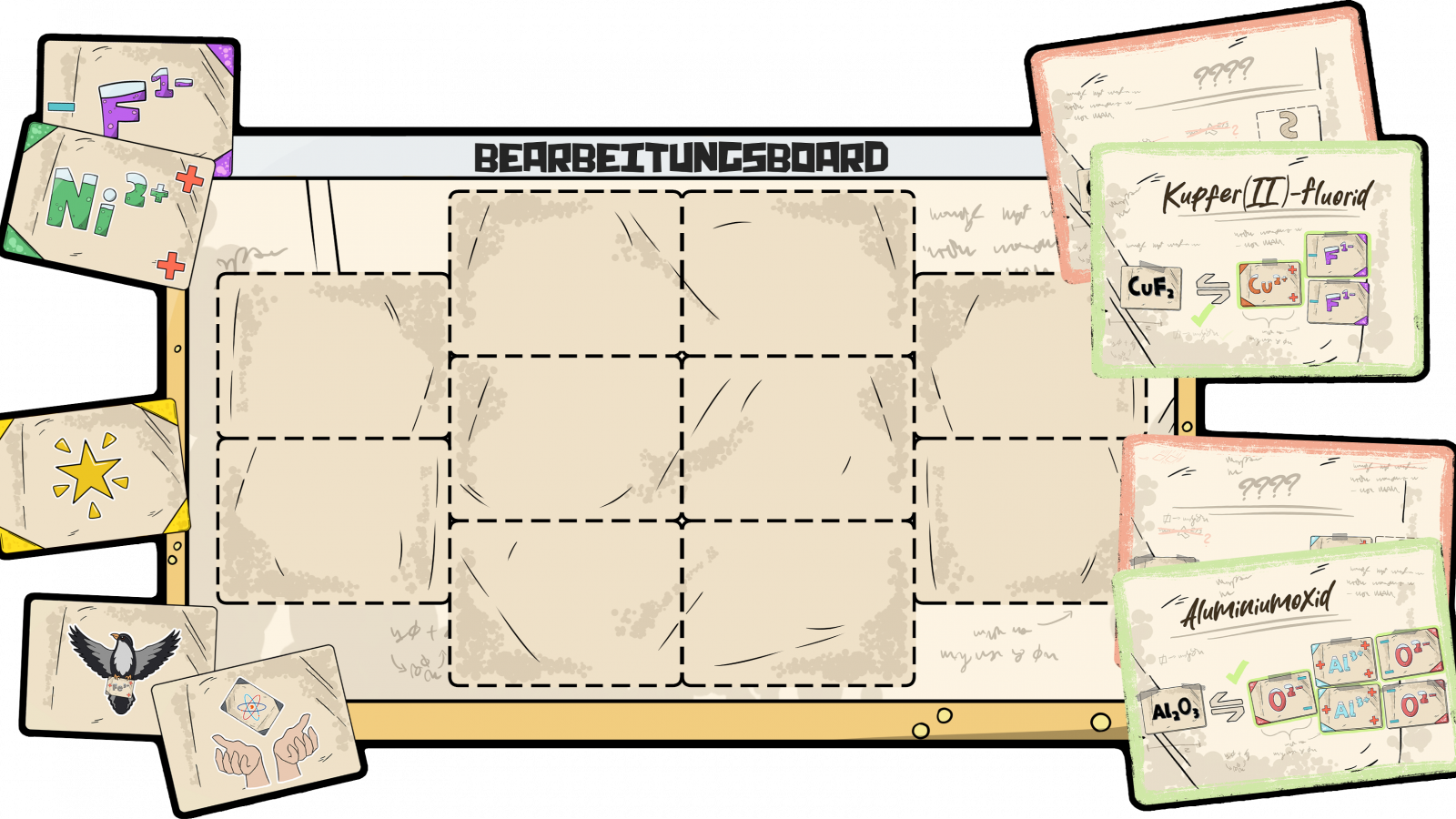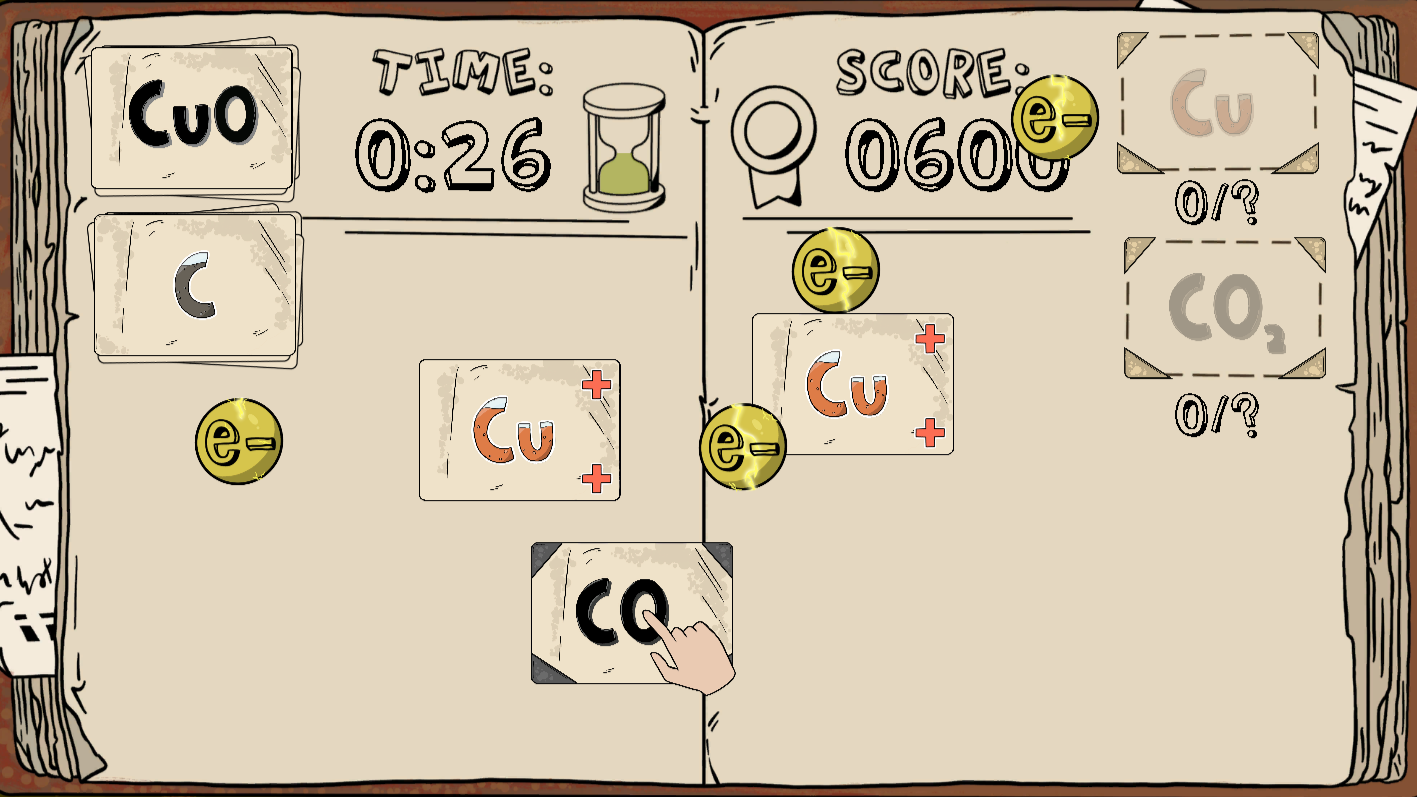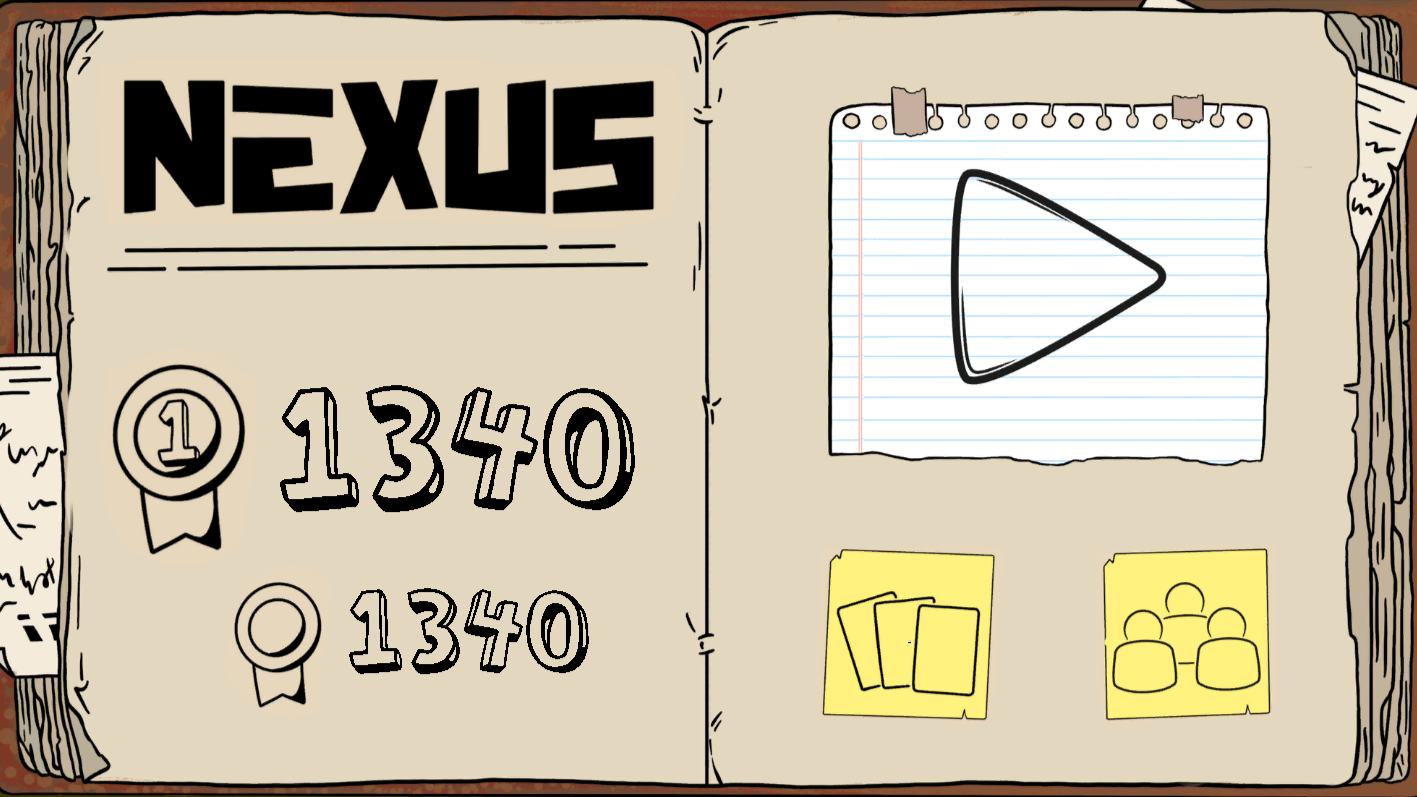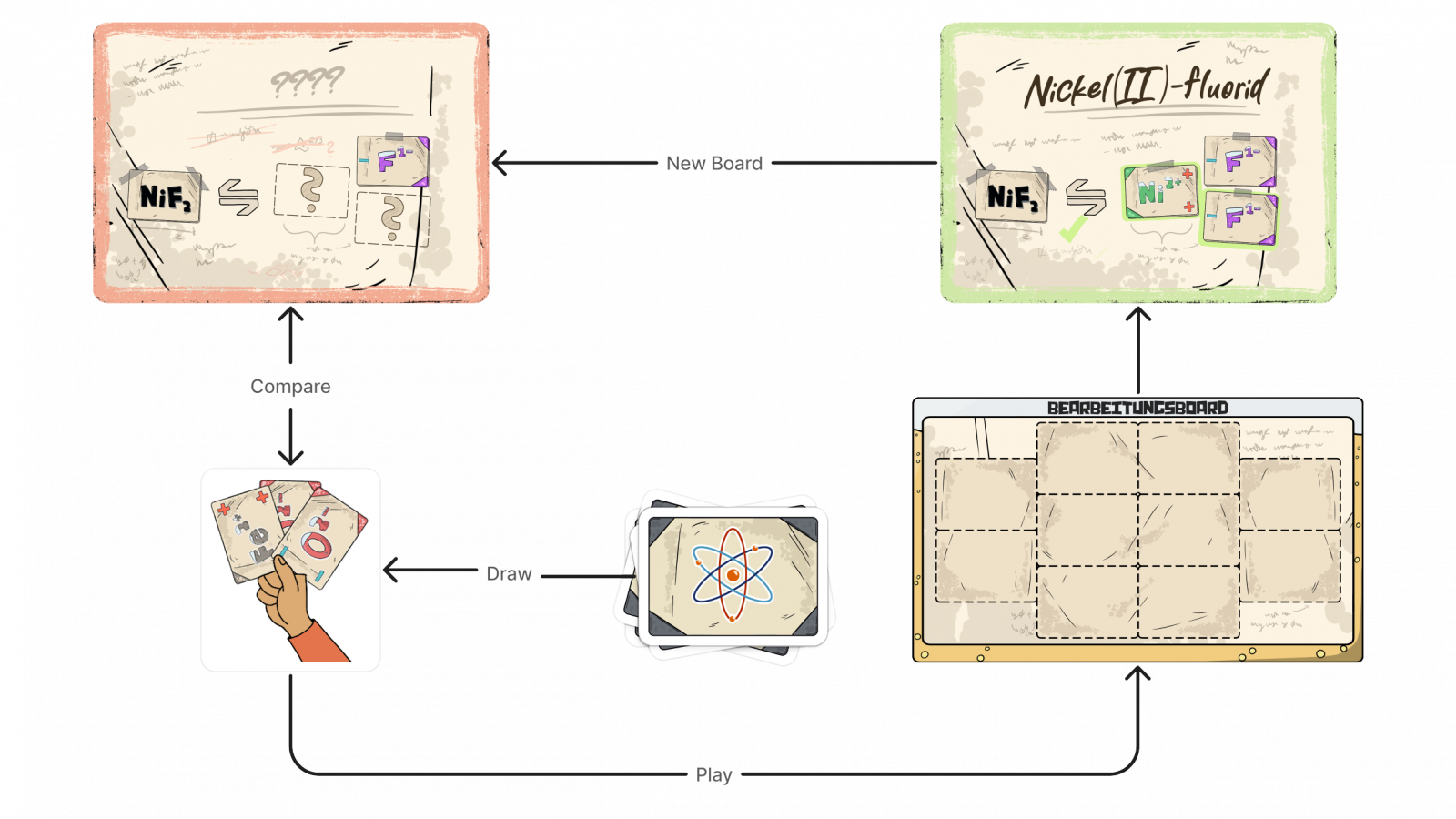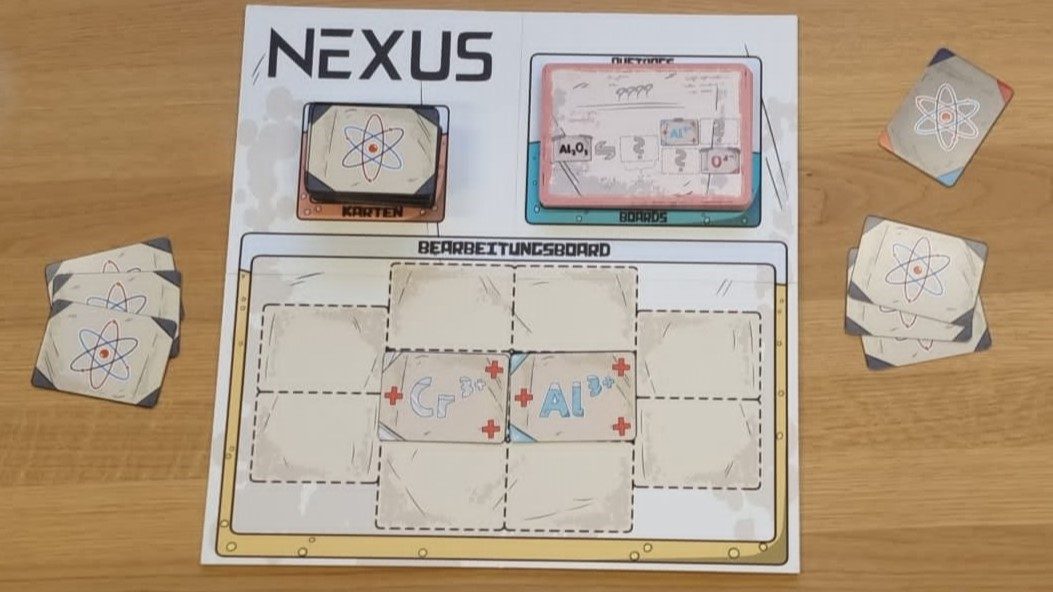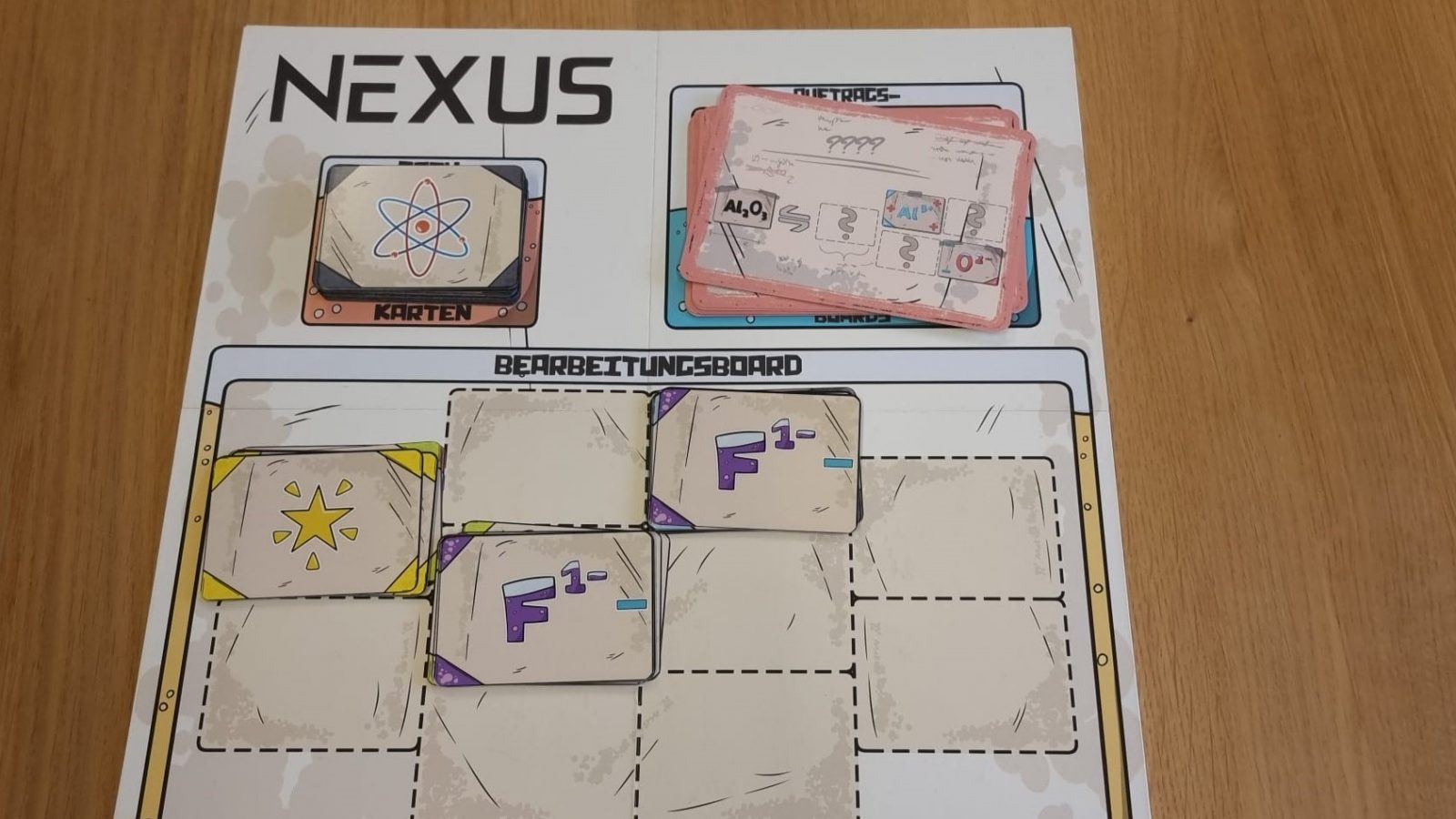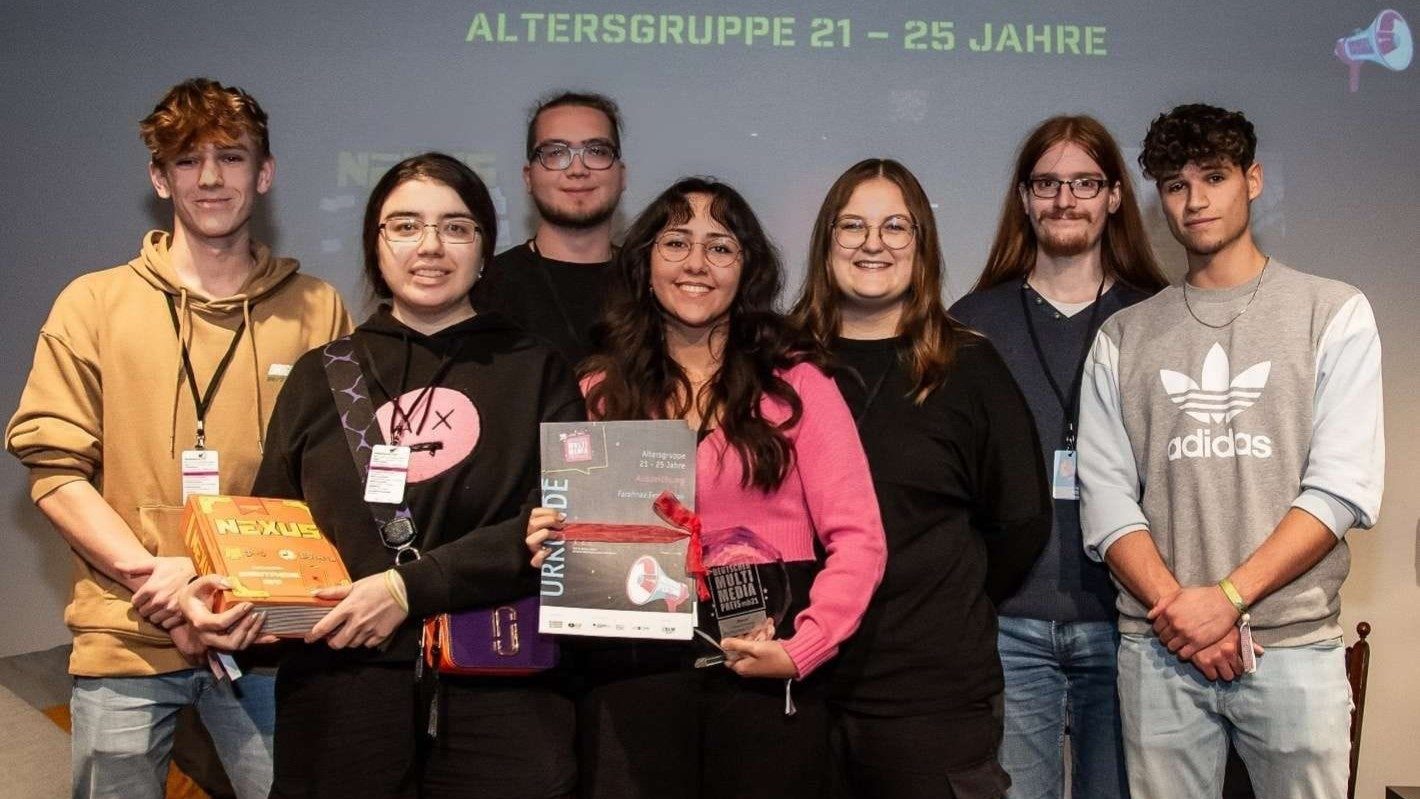
Nexus is a serious game that was made for 9th graders in Bavaria on behalf of a chemistry teacher. Its purpose is to help students practice and understand redox reactions.
The game consits of two parts, one is the card game in which the students must built different materials from their cards in order to gain points. The other is an app, were the students play through a series of redox reactions in arcade highscore fashion.
This was my second project, together with my team from „Tears and Dust“. And again a completly new challange. The hardest part of this project was to turn school practises into something fun while upholding our clients requirments. After all the struggle we can be proud of what we achieved, then with this game we even mangaged to win second place in the German Multimedia-award mb21.
Learning Goals
learning goals describe what exactly a game wants to teach is players, in the context of our serious game we deducted three goals that the students had to learn in order to practice the theme set by the teacher. A for me enterly new way to make games, for every mechanics, quest and level have to fullfill the sole purpose of teaching the required information/methods whilst upholding fun.
Redox reactions are the exchange of electrons between atoms. In school these have to be calculated. for these calculation three steps are required: dermine Oxidiation number, the exchange itself and last the resulting material.
Oxidation number
In the card game part of Nexus students built metal based materials. To do so, they are given cards. These cards portray ions and their charge/oxidation number. The required material is shown through a quest board, on which different hints tell the student what is needed to complete the material.
Through this visualization of what oxidation numbers do and how they work, we take away the abstract methods used in classes. This helps the students understand what they are actually doing on their worksheet.


Electron Exchange
In the app part of Nexus the students can practice the other to goals. One of them is the electron exchange. Where the electrons move from one atom shell to the other atom’s shell.
To do this the students have to energize (shake) a material first, it will then lose electron. These electrons fly through the screen and must be caught. Then they can be put onto the right atom to stabilize it.
In classes this entire process is usually portrayed as „→„ leaving the student with almost no visual input on what is happening.
Nexus shows the students the process they work through playfully, making it easier for them to use their knowledge in classes and exams.
New Materials
At the end of a Redox reaction, new materials are formed. The same goes for Nexus. Here, the students put together the atoms to proper materials in order to get points.
This last steps puts all previous task in perspective and connects them with what they learn in class.
Working for a Client
We now had to work for a client who wasn’t involved in game development themselves. This brought us new challenges. The development was now centered around an „extern“ vision, and we had to find out how to convert this vision into game vision. This included communicating our game vision back to the client and explaining how our game vision fulfills their vision. The most troubling part of development was making the game usable in class, because this included many restrictions on playtime, preparation, and size. This also led us to split Nexus into two parts. This allowed us to properly implement the learning goals without forcing things together.

Target group vs Client
As one might expect, the wishes of students and teacher can be quite conflicting. That these two were our most important stakeholders didn’t make it easier. For the most time of this project, we were trying to find a concept that satisfies both parties sufficiently. That meant a lot of rapid prototyping and throwing ideas away.
The breakthrough was achieved when we decided to split the game into two. The card game and the app, now we had enough room to weave the learning goals into a fun game.
Flexibiliety
In order to properly implement the wishes of our client, we had to use a more flexible working method than before. This also helped us during our rather long trial and error run, where we tried to find a balance between serious and game.
For this, we used the scrum-method, and showed our client a finished iteration every two weeks. In these review, we also told them the plans for the next sprint and what to expect. After the review and we made the proper adjustments and continue with the plan.

What I learned from Nexus
Nexus has taught me many things, the most important one is how to let go. Throwing away concept and loved ideas because they don’t fulfill their intended purpose has become a norm during development. The only opinions that matter were the one from our client and target group. I learned how to base decisions on empiric information from tests. Another valuable lesson were the learning goals, because every game teaches their players how to play it. So they prove to be a useful tool in my game design box.
In conclusion, I learned to be flexible and compromise my own wishes for the purpose of a better game. Things that will hopefully help my on my journey to a professional game designer.
